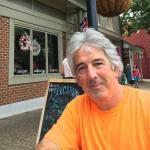The seductive musical art form from Brazil known as bossa nova took up residence in Barcelona for the first week of September, as the Sant Andreu Jazz Band−led by its tireless founder and director Joan Chamorro−dedicated its 9th annual Jazzing Festival to the Brazilian style.
For those unfamiliar with the SAJB, Chamorro founded the project in 2006 while teaching at the Escola Municipal de Musica in Sant Andreu. His goal for the SAJB was to teach classic jazz to young musicians. With just a handful of students at the beginning, it was primarily a Dixieland band, but as it grew in size, it inevitably morphed into a big band, specializing in swing and bebop. In 2012, it became a self-contained non-profit entity, separate from the music school, giving Chamorro the freedom to guide his students according to his vision of teaching jazz, with a balance of discipline and pure enjoyment. The results have been receiving praise and respect from professional musicians, band directors, and countless jazz fans around the globe, due in great part to the 1,000+ videos of SAJB performances and recording sessions listed on YouTube.
It has produced an astonishing number of brilliant young musicians and singers who have since “graduated” the band to continue their careers as professionals—among them: Andrea Motis, Rita Payes, Eva Fernandez, Magali Datzira, Jon Mar Sauque, and Jan Domenech. Elia Bastida, who, after completing a decade as violinist, saxophonist, and singer with the band, is busy with her career, but also remains instrumental (no pun intended) to the smooth running of Jazzing and other SAJB events and activities.
The festival takes place at the Fabra i Coats cultural center, a former textile factory saved from demolition and re-purposed by the city of Barcelona as a civic center for art exhibitions and music performances. The extensive renovations of the site continue during the day, as circular saws cut through bricks, and pulleys hoist lumber upward along the scaffolds (making the venue potentially the most dangerous jazz festival in the world).
The first Jazzing Fest took place in 2014, for which Chamorro invited guest professionals and other big bands to participate. “For the first, we had ten big bands,” he says, making it the only time a Jazzing Fest had a theme—until this year’s celebration of bossa nova and related Brazilian music. Now, the four-day festival combines concerts with the Education Stage of workshops, emphasizing the learning component—and raison d’etre—of the SAJB. This Education Stage, the brainchild of project manager Blanca Gallo Yanez, was first incorporated into the festival in 2019. And, while the workshops and master classes are perhaps best appreciated by amateur and professional musicians (some of whom bring their own instruments along), non-musicians can also pick up on the general points of playing jazz, as discussed and demonstrated in the informal setting.
The first day of the festival included workshops by Chamorro himself, who spoke of his teaching method, and how creating the SAJB affected a change in his own pedagogy. “I realized that learning music should be adaptive, not difficult. As a teacher, I’ve always tried to improve my teaching, so young people can learn better. It’s more powerful to pass along what I feel than what I know, which is very important with young people. You can learn everything on the Internet, but one thing you can’t find is how we are learning.
“I believe teaching is something sacred. In our case, I see that in the evolution of the young people growing with us. But the key to progression is to find an equilibrium between discipline to learn, and enjoying it—not to make the kids bored. I’ve been searching for this since I started teaching almost forty years ago.”
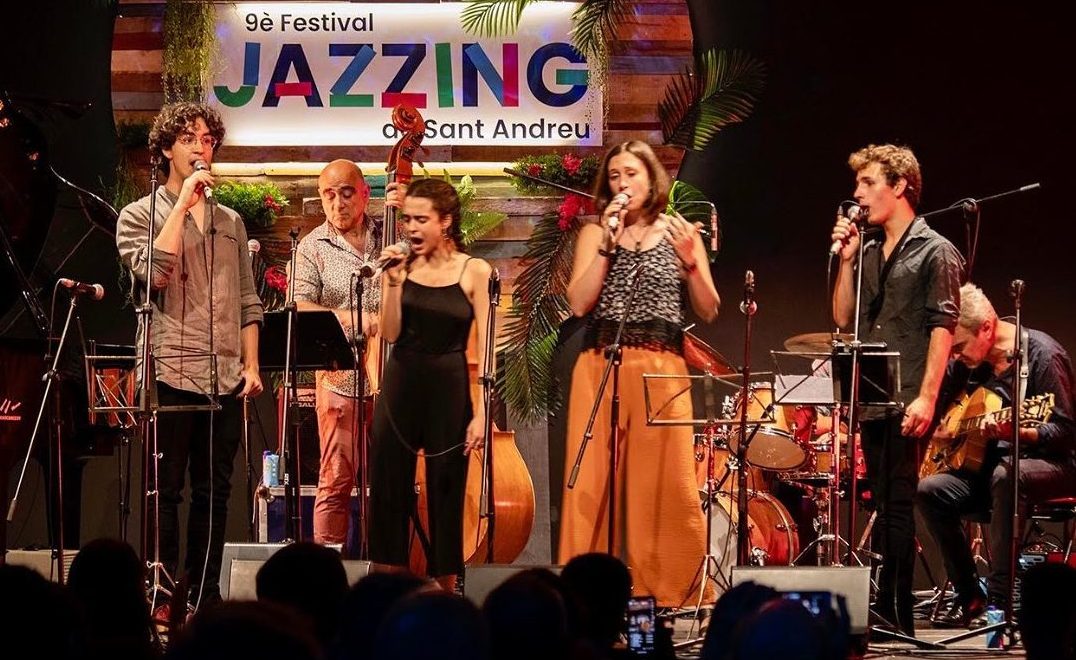
For a very young musician, he says, “it is super important to listen. What do we do with a six-or seven-year old who doesn’t know what they want? Have them listen to the music. Have them begin to learn their instruments. First you hear, then you play. Johnny Hodges for example. I’d say ‘Let’s try to play him.’ ‘That’s really difficult, we’re just beginning,’ they could say. It’s not diffiuclt with practice, little by little, every day.”
Essential to the process, he explains, is singing. When listening to a solo by a jazz legend, “sing what you’ve been hearing, internalize it. Then you pass it to the instrument. The instrument is an extension of your voice. When we work like this, especially with youngsters, they fall in love with the whole thing. A seven- to 14-year-old will be willing to practice every day, and it finally becomes part of their daily lives.”
He adds that ninety percent of SAJB kids “didn’t know about jazz at all” upon first joining the band. “It’s not always a love-at-first-sight, but it comes with time. The important thing is the journey, not the arrival. It’s important to make the work experience happy.”
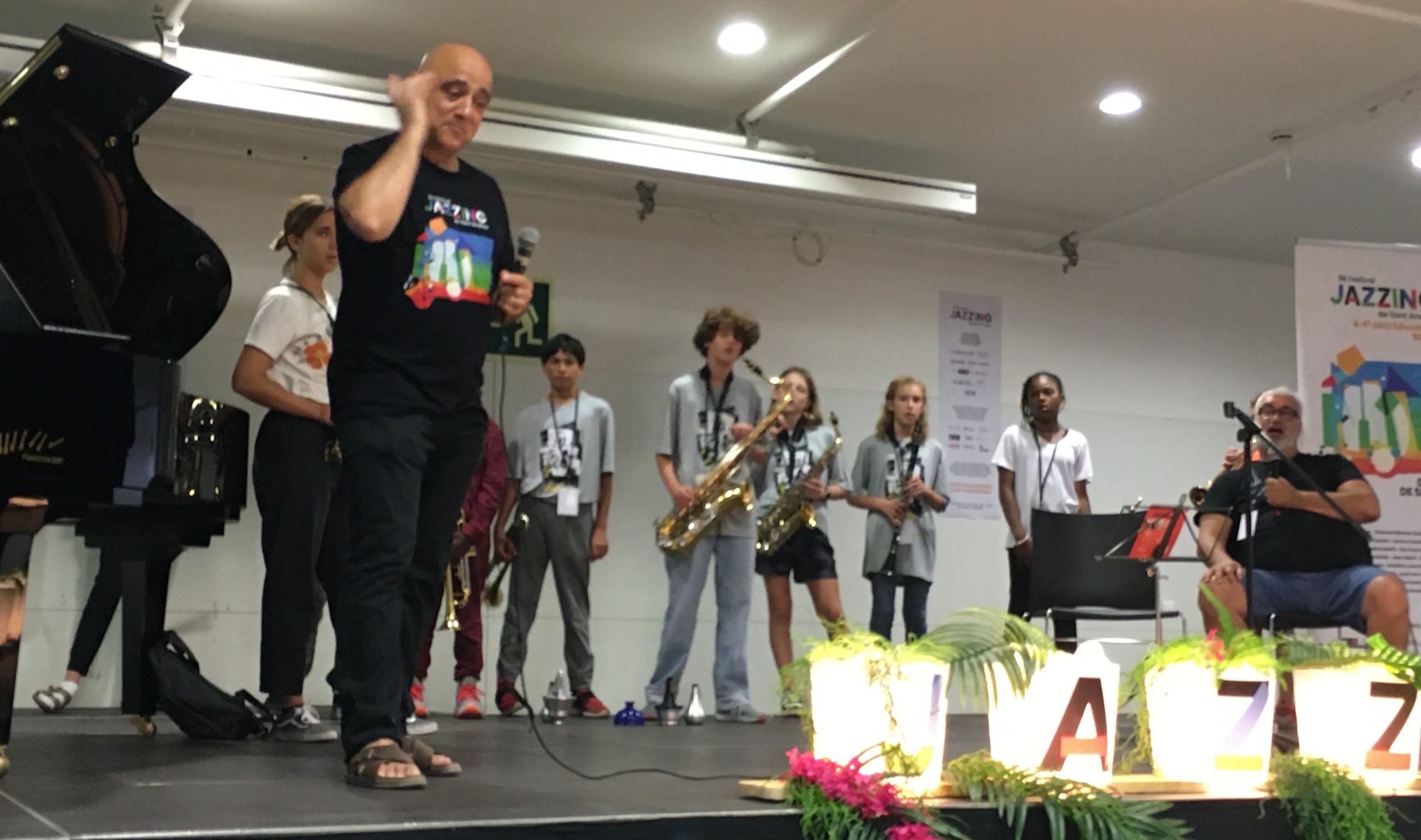
He demonstrated his teaching method with the help of visiting members of the CPS Elementary Jazz Band from Cincinnati, created and directed by Dr. Isidore Rudnick, who acknowledges, “I was in great part inspired by Joan Chamorro.” With his 11- and 12-year-old students assembled onstage, along with some of the younger SAJB members, Chamorro chose a jazz melody, had them sing just a single note at a time, then play the note on their instruments, add the next few notes, sing them, play them, etc. “No paper [sheet music] needed,” he stressed.
Other workshops throughout the week included those by Elia Bastida—who can rightfully stake the claim as the world’s greatest jazz violinist (although she is far too modest to ever do so), and guest Brazilian guitarist Jurandir Santana, who demonstrated the similarities and differences between samba and bossa nova rhythms (among the listeners in the front row were SAJB trumpeter/singer/bossa nova specialist Alba Armengou).
Still more workshops and jam sessions, such as those with special guest Dmitry Baevsky, Russian saxophonist via New York, kept the morning and afternoon schedules full each day in one building, while in the main building just yards away, open rehearsals and sound checks with the big band and guest musicians filled the air at regular intervals.
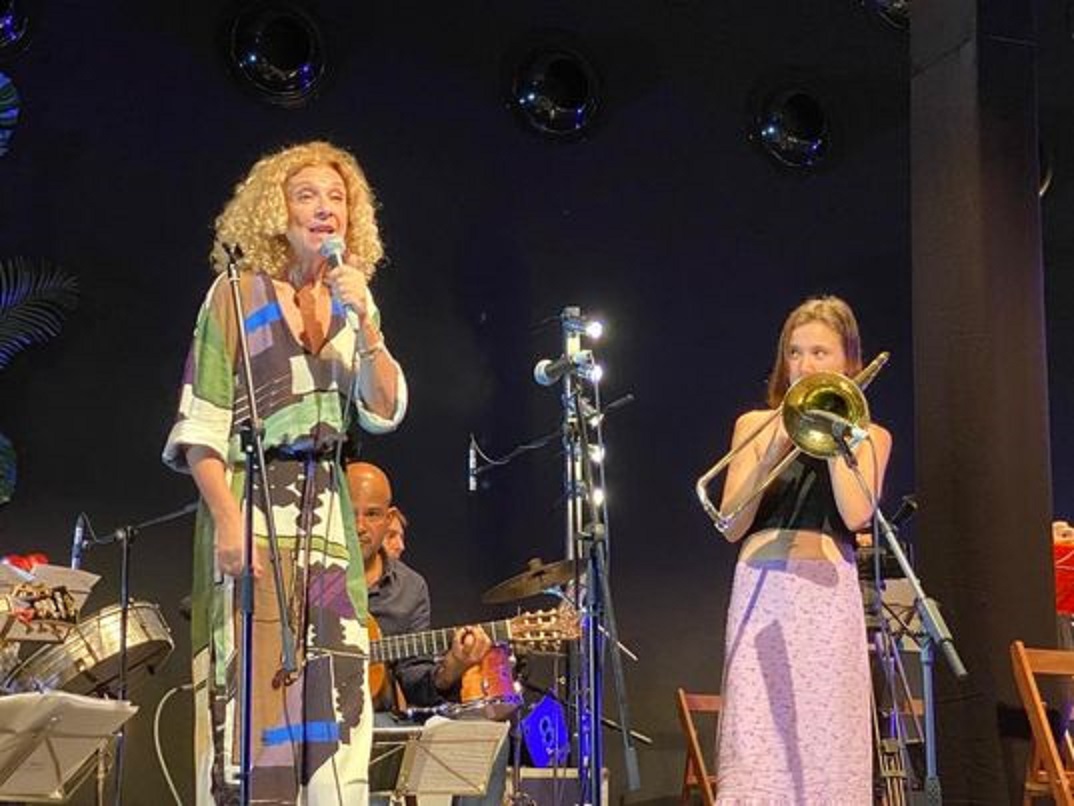
Even as the young musicians worked to get their notes and chords just right, the atmosphere in the venue was always relaxed, with onlookers welcome to sit through all or part of the rehearsals, chat with the musicians during down time, or visit the vending table in the lobby selling the band’s T-shirts and CDs (sales of the discs, along with ticket sales and online live steaming for the concerts themselves, provide the majority of the revenue for the project, which doesn’t rely on government funding).
This year, musical guests from Brazil included singers Vanessa Moreno, Carme Canela, and Mirla Riomar. While they aren’t household names for most of us, each contributed authentic flavor to her set. The concerts themselves capped off each day’s activities (more about that later).
So, why was bossa nova the chosen theme for this year’s Jazzing? Simple. Joan Chamorro loves it. He noted, “In the last five or six years, we’ve done a lot of bossa nova recordings with Alba Armenagou, Andrea, Rita…” It felt appropriate, he reasoned, to devote the full week of the festival to the style.
Naturally, to love bossa nova is to love its original creators, guitarist/singer Joao Gilberto and composer/arranger Antonio Carlos Jobim, who joined forces to produce the first bossa nova hit, “Chega de Saudade,” in 1958, building the foundation upon which other composers and singers of bossa nova have contributed throughout the past sixty-plus years. Chamorro speaks of how he was especially inspired by the 1964 Getz-Gilberto album, which blended Stan Getz’s “West Coast” jazz with the work of Gilberto (with Jobim producing and playing piano). “I think it was one of the first that united bossa and jazz,” he says, “That album was one of my all-time favorites.”
His love of Jobim’s compositions, the Getz-Gilberto album, and bossa nova in general did not immediately work its way into the Sant Andreu Jazz Band’s repertoire, but its musicians and singers felt comfortable with the genre immediately.
“The first [live performance] was ‘The Waters of March,’” Chamorro recalls, referring to Jobim’s 1972 masterpiece, “which Alba Armengou and Rita Payes sing, and ‘Wave’ (instrumental played by Max Salgado on the French horn). Joel Frahm played tenor sax on both, as a special guest, and we recorded them in 2015 at the Palau de la Musica. But before, we had already recorded some bossa novas in other contexts.”
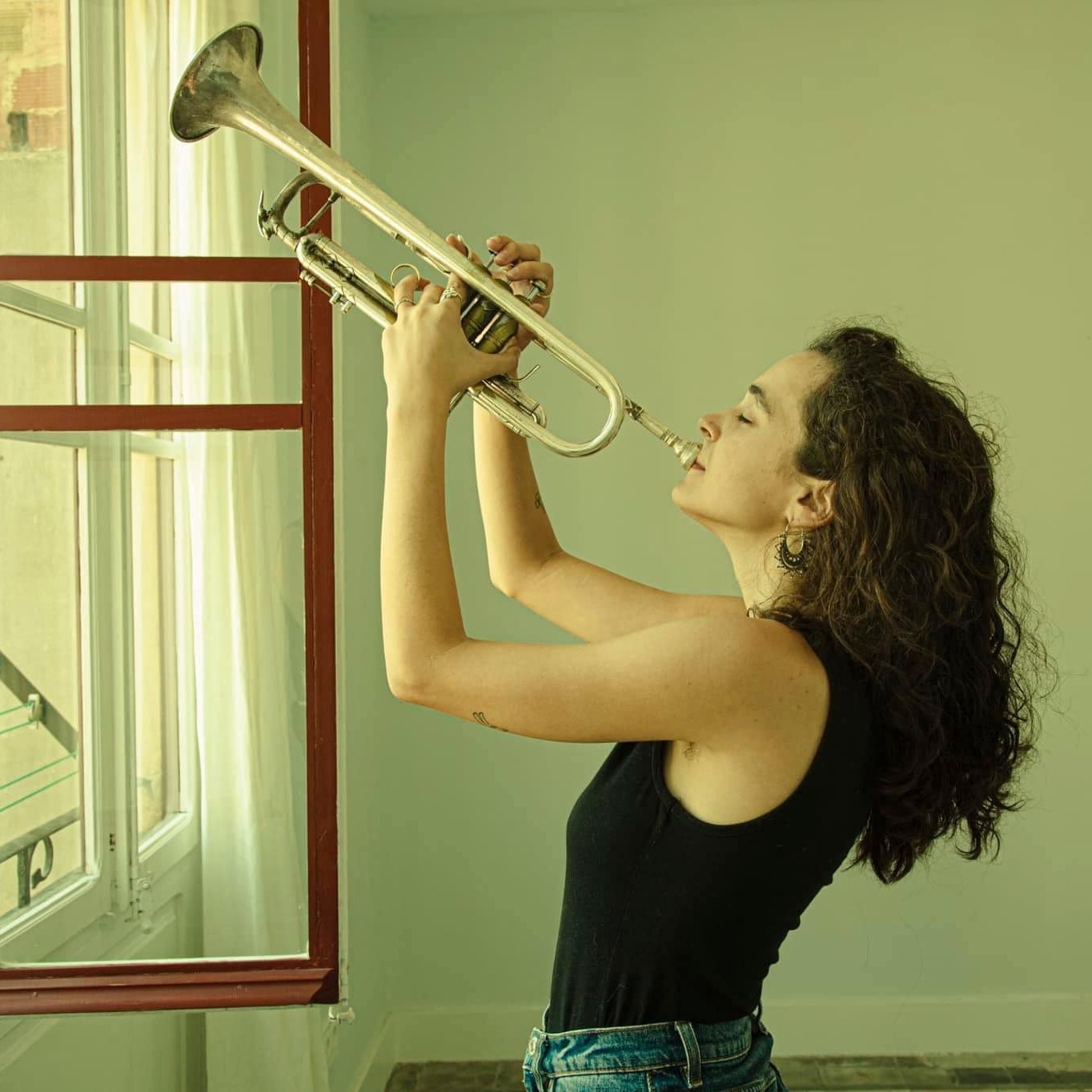
Alba and Rita adhered to the Portuguese version recorded by Jobim and singer Elis Regina in 1974. Joel Frahm confessed to being deeply moved witnessing the girls’ duet in rehearsal (which is evident in the rehearsal video posted on YouTube), as well as by their later performance onstage: “I can’t tell you how proud I am of having been asked to play with Joan and all of his marvelous young musicians. This particular performance brings tears to my eyes every single time I’ve heard it. The attention to detail paid by the band and vocalists is second to none. The joy and emotion in tandem with the hard work they’ve put in makes them an ensemble like no other I’ve encountered. Bravo to Joan and all of the musicians that have gone through this band.”
Elia Bastida sang on nearly a dozen Brazilian songs in her years with the band, saying, “I love singing ‘bossa nova’ and Brazilian music…I didn’t know Jobim before I was with the SAJB, because until then I played only classical music. When I heard this kind of music, I loved it because it’s very cheerful. Although it talks about sad things, it has a component that is different from other kinds of music.” The first Brazilian song she recorded as a lead vocalist with the SAJB was “Baiao de Quatro Toques,” which she has sung “in a thousand concerts” and still loves it (to prove it, she sang it again to the delight of the Jazzing audience).
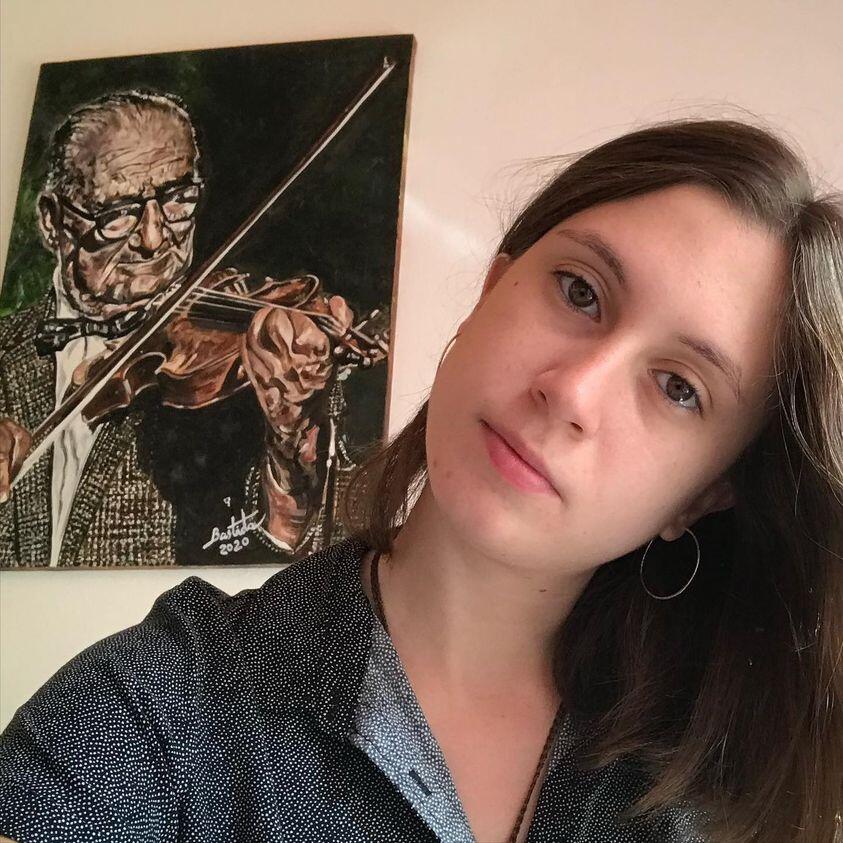
“I spend many hours listening to the music of Jobim, Joao Gilberto, Elis Regina, Maria Behtana, Rosa Passos…” She has even co-written a song with Joan Chamorro, “Uma Estrela,” for which she wrote the lyrics in Portuguese. “Singing this kind of music for me is very special. The ‘sotaque’ (Brazilian accent) and this language is very lovely to sing, and for me it’s very easy to feel identified with. One of my musical dreams is to be able to go and play music in Brazil.”
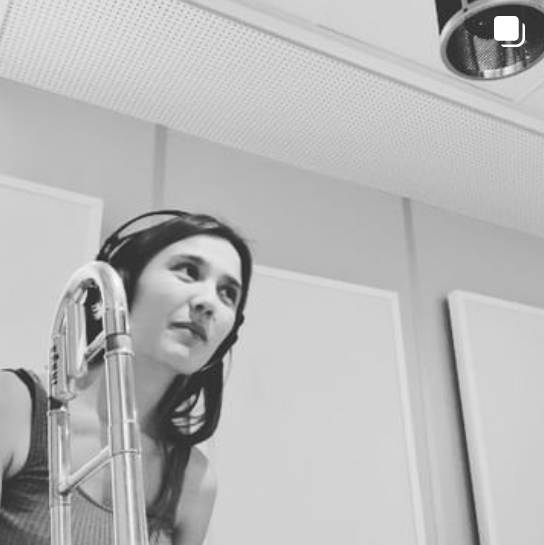
Former SAJB trombonist Rita Payes, now busy recording and touring throughout Europe, also holds a special place in her heart for bossa nova. “Singing in Portuguese for me is like, more [intimate] to me than singing in English. It’s simply that I love this music. I love listening to Joao Gilberto, Chico Barque…I love that sound, I love the sound of the language, too. It has a big connection with jazz and the harmonies…It’s beautiful because you can learn both at the same time — you can learn a jazz tune, and the next day you can learn a bossa nova tune, and it’s kind of the same.”
At one point, after the band had learned “Desafinado” and “Corcovado,” and “Doralice” (by Antônio Almeida and Dorival Caymmi), Chamorro had the idea to record all the tracks that appear on the Getz-Gilberto album—which he has done, albeit at different times and in different settings, rather than as one single concert or recording. Still more Brazilian composers and singers further inspired the SAJB to expand that repertoire. “As the girls got to know the music of Brazil,” he says, “they went on proposing songs. They knew Elis Regina, Lara Leao, Rosa Pasos, etc.”
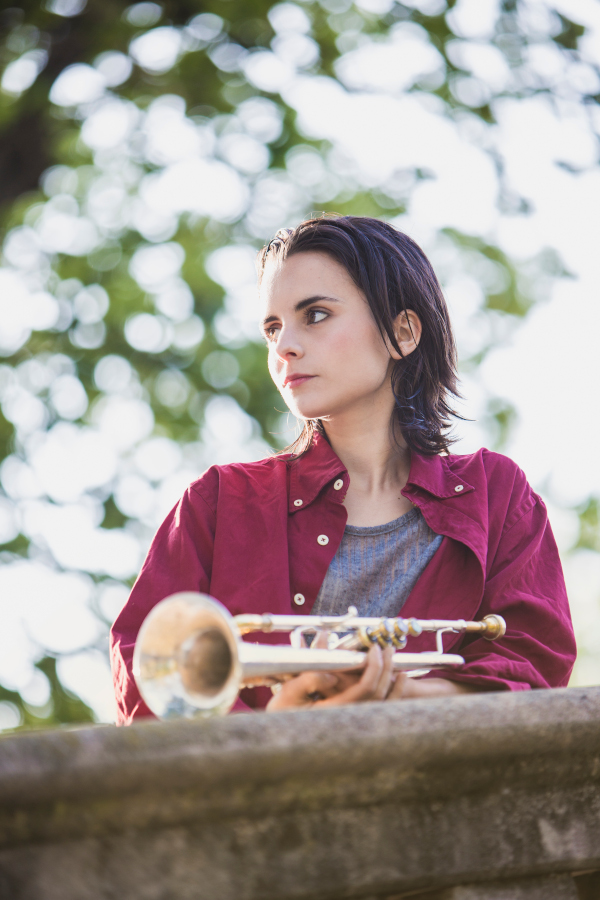
Andrea Motis also became enamored of Jobim and bossa nova, recording “Chega de Saudade” on her first album with Chamorro when she was 15 and performed it often in concert with her quintet.
She has recorded other Jobim songs as well, and her 2018 album Do Outro Lado Do Azul (The Other Side of the Blue), honors Brazilian composers other than Jobim, while also including a few of her own compositions in that style.
Josep Traver, longtime friend of Chamorro and who has toured as part of Andrea’s quintet, and who continues to be essential to countless SAJB recordings and performances, gave his own workshop about Joao Gilberto’s guitar techniques, complete with vintage video clips of the bossa nova co-creator. “Even though I play many kinds of music,” he explained, “Brazilian music is a special thing, since it’s been played so much by the SAJB.”
The band’s current lead alto saxophonist Koldo Munne confesses that, unlike most of the band members of past years who quickly fell for the smooth rhythms of bossa nova, he wasn’t fond of it–at first. ”We’ve never done a full week with so much Brazilian and bossa nova,” he says. ”I was not a big fan of bossa nova before Jazzing, but with all the singers [rehearsing]…now I love it. I’ve fallen in love with it, and the other Brazilian styles, too.”
The events most attendees remember from each Jazzing are, of course, the concerts, which are now live-streamed for fans around the world who are unable to make the trek to Sant Andreu. They are also recorded and filmed by the indispensable team of Ramon Tort (recording the video), and audio engineer David Casamitjana, who not only produces the perfect sound balance for the auditorium, but has achieved the same results for the SAJB-related studio recordings.
The first of the evening concerts featured the Dmitry Baevsky Quartet, offering a mix of standards performed as bossa nova (including Duke Ellington’s “Smada”) and the original classics “Chega de Saudade” and “Desifinado.” It was Baevsky’s first appearance at Jazzing, but he seemed to feel comfortable with the venue, the SAJB musicians, and the week’s overarching musical theme.
Following the set with his band, he was joined by the septet consisting of Alba Armengou (vocals/trumpet), Joan Marti (vocals/sax/flute), Elia Bastida (vocals/violin), Koldo Munne (sax), Josep Traver (guitar), Joan Chamorro (contrabass), and Arnau Julia (drums). The group proceeded to indulge in a dozen more bossa nova standards, among them “Agua de Beber,” “Corcovado,” and “Otra Vez.” With these more experienced SAJB musicians doing what they do best, the excellent quality was practically a given, and the singing superb. Alba’s smooth, soft vocals have always been a perfect match for bossa nova, and she gives her all for each and every song. Elia Bastida, when not contributing her mastery of the violin, continued to greatly impress with her own singing and stage presence (the fluid nature of the SAJB allows those who are technically no longer regular members to still return and take part in concerts and recordings when possible). And it’s always a treat whenever Elia and Alba harmonize together. Kold Munne and Joan Marti, among the few male singers in the band’s history, and made the most of their vocal turns as well.
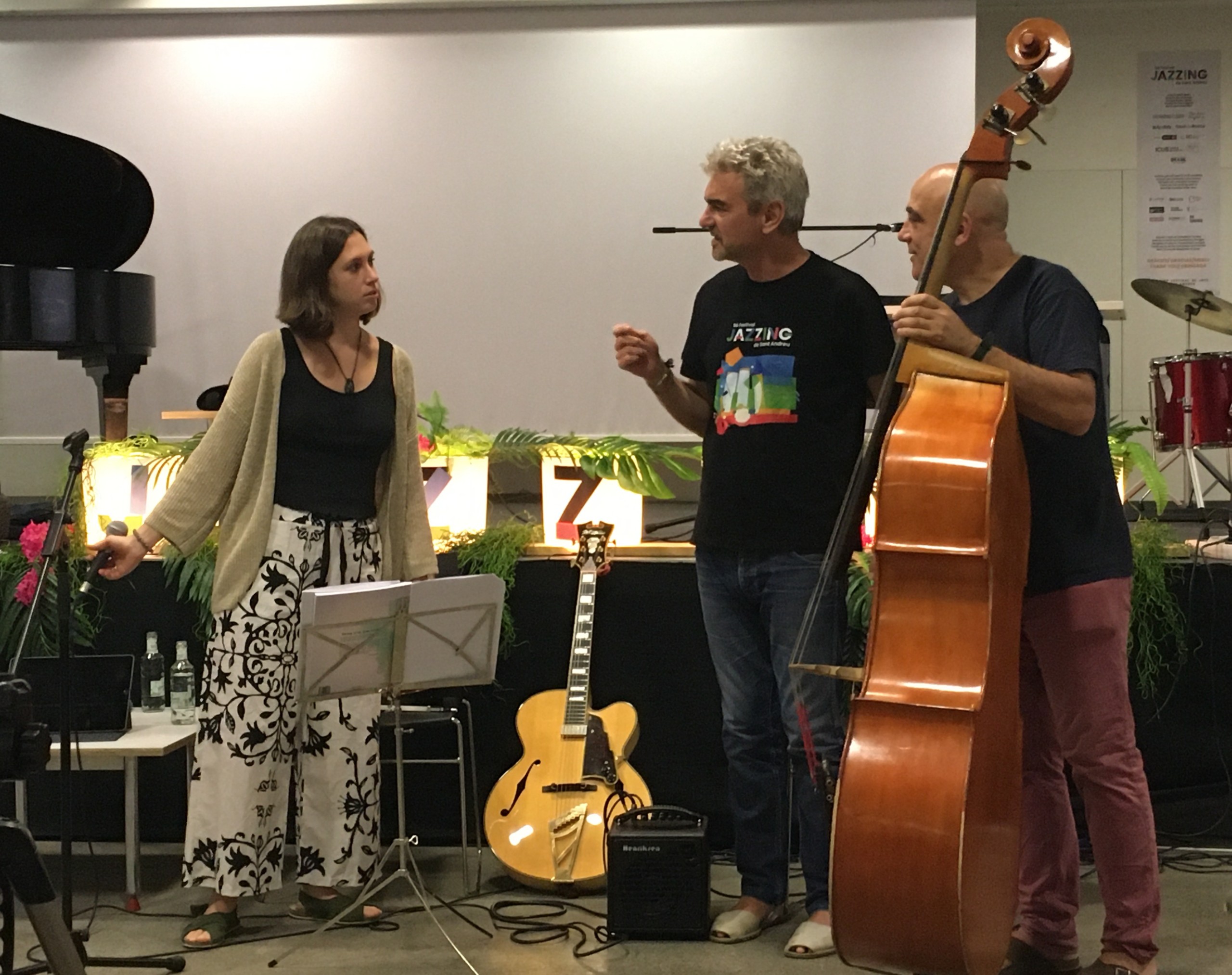
Two more special guests making concert appearances at the festival came not from Brazil, but as former members and virtual legends of the SAJB family itself. Rita Payes joined the band in 2013 at the age of 14 and was soon lauded as a prodigy, becoming one of the most in-demand jazz trombonists in Europe. She took part in the big band concert tribute to singer Rosa Passos with little or no rehearsal time, as she has been constantly on the move for her own touring schedule with her mother, guitarist Elizabeth Roma. However, knowing the Brazilian catalogue by heart as she does, she was still in fine form as both singer and musician.
The following evening, trumpeter extraordinarire Andrea Motis joined the Brazilian Jazz Party. The first break-out “star” of the band (although the label is generally discouraged in the SAJB universe), she led the ensemble for three songs, arranged especially for the occasion by Barcelona pianist/arranger Joan Monne, whose arrangements have long been essential to the high musical standards of the project. Andrea played flugelhorn rather than trumpet for her set, giving her solos a fuller, honey-toned sound more appropriate for the bossa nova treatment. She also shared duets with energetic, 14-year-old Brazilian rising star Analu Sampaio.
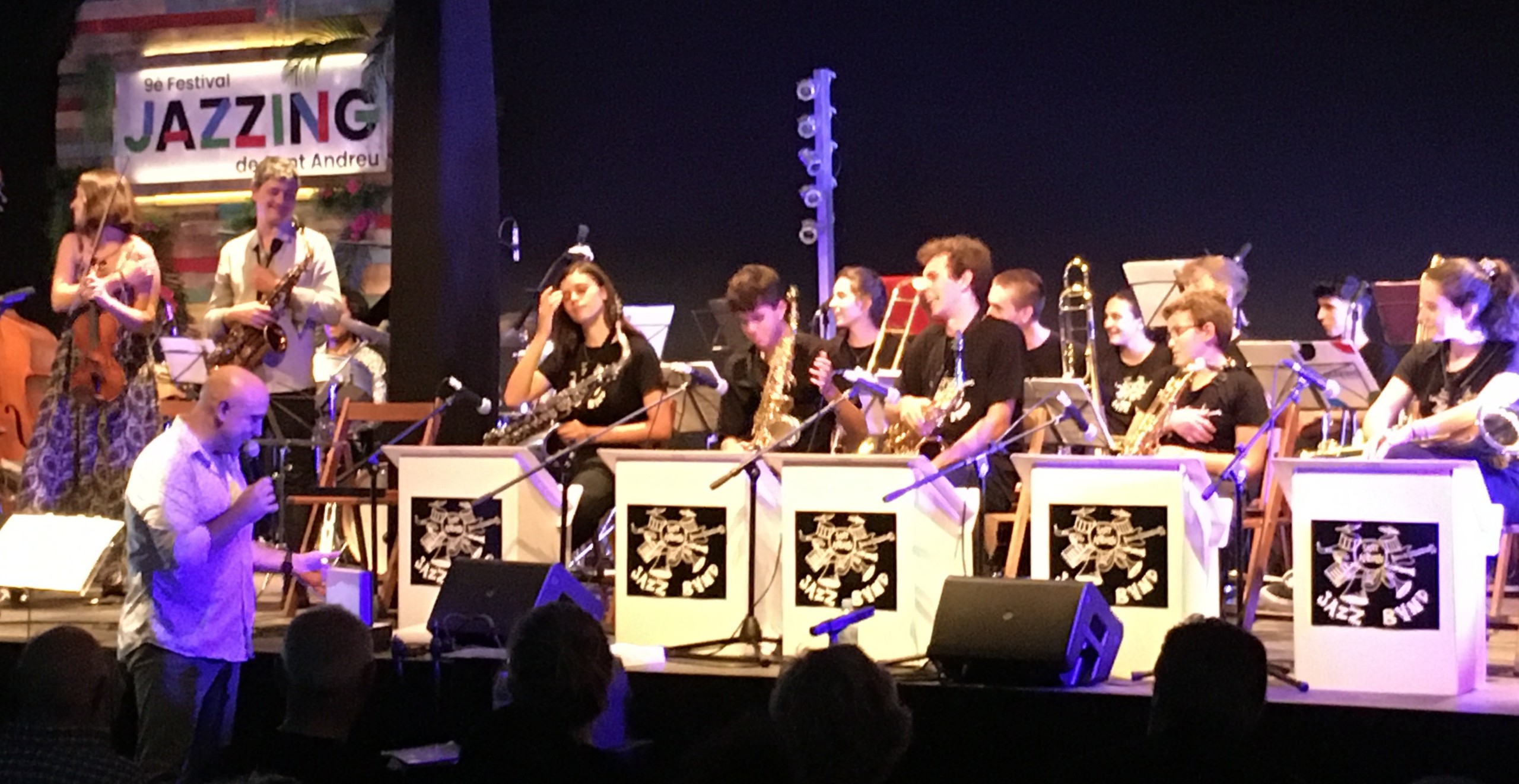
and guests, as Elia Bastida and Dmitry Baevsky look on. (photo by Garry Berman)
The SAJB big band itself sounded impeccable, especially considering how it has been in transition for the past year or two. A new, young ensemble, several of whom are still pre-teens, are learning to continue the 16-year tradition of taking Chamorro’s vision and instruction and producing polished, lively performances under his guidance. At the same time, the more experienced members of the band–Alba and Elsa Armengou (trumpets), Claudia Rostey (trombone/vocals), Joan Marti, and Koldo Munne (saxes)–have risen through the ranks to become the most reliable soloists and leaders for the new crop to follow.
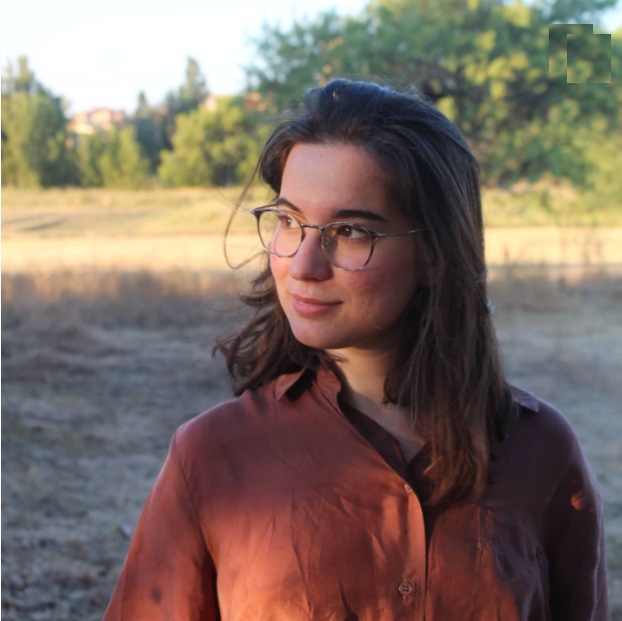
And we would be remiss not to pay special mention to baritone saxophonist Alba Esteban, who at 22 will soon complete her twelve-year tenure with the band as perhaps its most rock-steady section player, and soloist capable of producing haunting sounds from her baritone. Shy and not one to seek the spotlight, she has pleasantly surprised many in recent years with her sweet singing voice as well. Appropriately, Chamorro presented her with an award of appreciation for her years in the band.
If these descriptions of Jazzing seem to paint a picture of the SAJB as a big family, it’s very true—take it from an on-the-scene observer of the proceedings. In fact, as has been the case many times throughout the band’s existence, some members actually are family (Sander Theuns on sax and his brother Nils on drums; Lola Penaranda on sax and her brother Gerard on trumpet). And, because of the band members’ young ages, the parents not only lend their support, but also their time and help when needed, and have become friends through their childrens’ involvement in the project. During down time, the kids sometimes step out into the courtyard of the former textile factory buildings to kick a soccer ball around, chase each other, or sit to have a snack—the things all kids do. But, unlike most kids, they eventually return to rehearse and perform classic jazz standards made popular several decades before they were born.
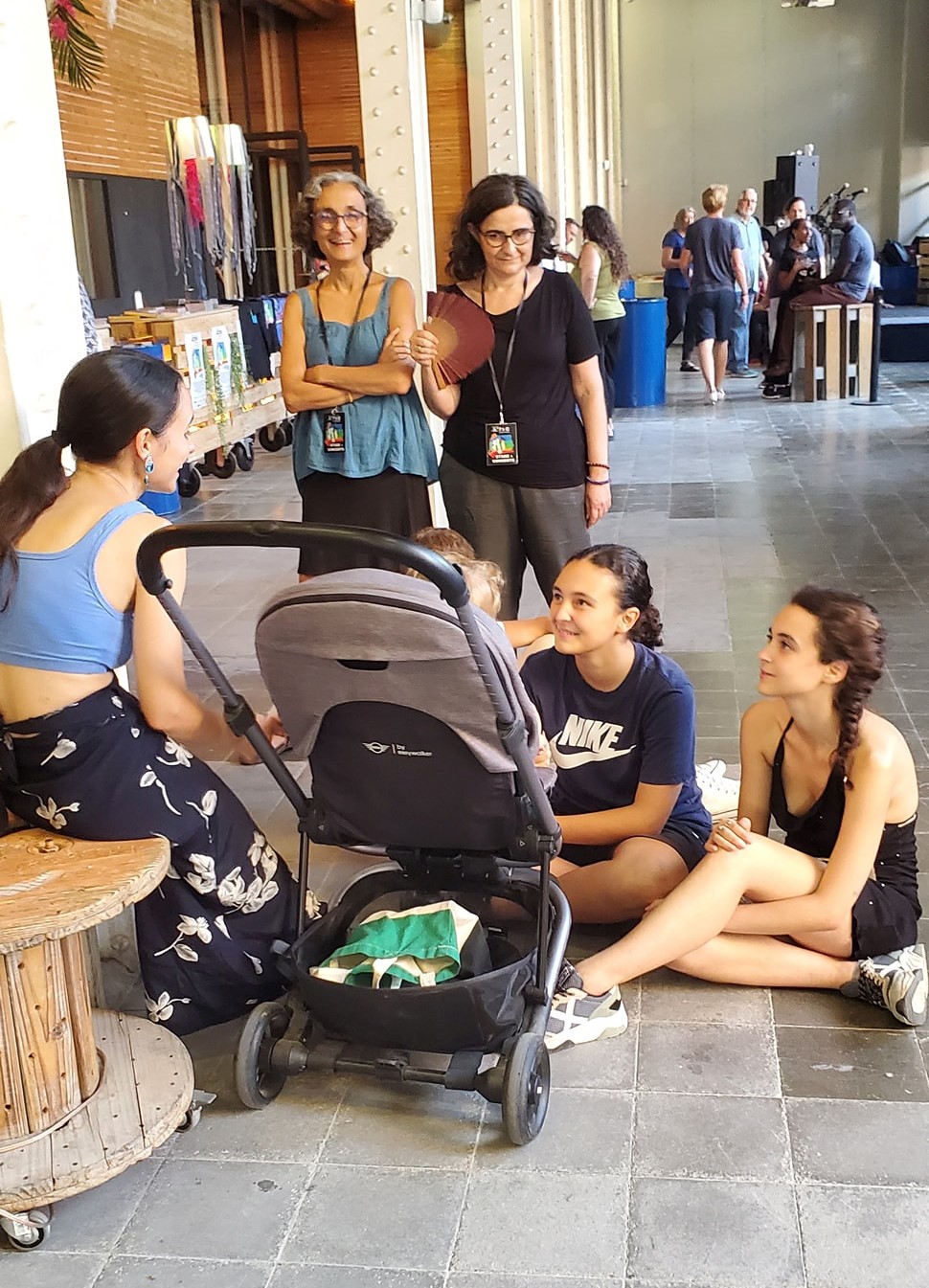
The aforementioned Andrea and Rita originally played in the SAJB as teens, and are now both young mothers, bringing their offspring to the venue for their respective visits, and further contributing to the family atmosphere.
The band members, their families, and special guests also enjoyed an informal, outdoor paella lunch, taking up dozens of tables on the Fabra i Coats grounds, socializing and talking about any and all topics under the hot sun (the tables were strategically placed in the shade). Joan Chamorro regaled the guests at his table with stories about the band, and future gigs on the schedule, including a first-ever trip to India by the SAJB’s “La Magia de la Veu (The Magic of the Voice)” ensemble.
Despite the success of the Brazilian-themed, 9th Jazzing Fest, Chamorro doesn’t necessarily envision a theme for each of the Jazzings to come. “It’s not my idea now,” he says. But the idea of perhaps devoting one year to Dixieland, which the younger, current musicians love to play, and which the SAJB played in its early years, seems to be bouncing around in the back of his mind.
As for next year’s big 10th anniversary of Jazzing, we’ll have to wait a bit longer to hear of the plans. But if previous years, including this one, are any indication, it’s smart to guess that it will be something special.
For over twenty years, Garry Berman has written books and articles related to pop culture and entertainment history. He has contributed articles to Beatlefan magazine, Nostalgia Digest, and History magazine. In addition to his non-fiction work, he also writes comic novels and screenplays.He is also co-administrator of the Facebook group page Friends of Sant Andreu Jazz Band. Visit him online at www.GarryBerman.com.





